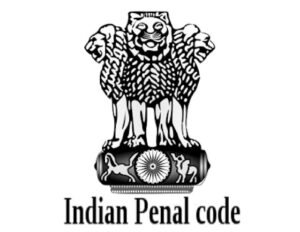Understanding Trademarks: Legal Protection, Registration, and Infringement Issues
Trademarks are essential business assets that are used to identify and distinguish goods and services in the marketplace. They are a form of intellectual property that can be registered and protected under the law. A trademark can be a word, phrase, symbol, design, or any combination of these elements that is used to identify and distinguish the goods or services of one business from those of another.
Importance of Trademark
- Exclusive Rights: A registered trademark grants the owner exclusive rights to use the mark in connection with the goods or services for which it is registered. This allows the owner to prevent others from using similar marks that may cause confusion among consumers.
- Brand Recognition: A trademark helps consumers identify and distinguish the goods or services of one business from another. Strong trademarks can build brand recognition and loyalty, which can be valuable assets for businesses.
- Legal Protection: Trademarks provide legal protection against infringement and counterfeiting. If someone else uses a registered trademark without permission, the owner can take legal action to stop them and seek damages.
- Business Asset: A trademark can be a valuable business asset that can increase in value over time as the business grows and the trademark becomes more recognized.
- International Protection: Trademarks can be registered internationally, providing protection in multiple countries and helping businesses expand into new markets.
- Marketing Tool: Trademarks can be used as a marketing tool to promote products and services, differentiate them from competitors, and build brand recognition and loyalty among consumers.
Relevant Sections
- Section 2(1)(zb) – Definition of Trademark: The definition of a trademark under the Act includes any mark capable of being represented graphically, which can distinguish the goods or services of one person from those of others and can be used for indicating a connection between the goods or services and the person who is using the mark.
- Section 9 – Absolute grounds for refusal of registration: This section lists down certain conditions that may prevent a trademark from being registered. These include generic marks, descriptive marks, marks that are common to the trade, and marks that are likely to cause confusion or deception.
- Section 11 – Relative grounds for refusal of registration: This section deals with the likelihood of confusion that may arise if a trademark is registered. It prevents the registration of a mark that is identical or similar to an earlier mark, which is already registered or is the subject of an earlier pending application.
- Section 29 – Infringement of trademarks: This section deals with the infringement of a registered trademark. It provides that a person infringes a trademark if he uses an identical or similar mark in relation to identical or similar goods or services without the authorization of the trademark owner.
- Section 30 – Defences available to the defendant in an infringement suit: This section lays down certain defences available to a defendant in an infringement suit, such as the use of a trademark in good faith to describe the character or quality of goods, the use of a personal name or geographical name, and the use of a trademark by a prior user.
- Section 32 – Remedies for infringement: This section lists down the remedies available to a trademark owner in case of infringement, including injunctions, damages, and accounts of profits.
The legal protection and registration of trademarks is an important topic for businesses as it helps to prevent other businesses from using confusingly similar marks that could lead to consumer confusion and dilute the value of the trademark. Trademark protection is also important for consumers as it helps them to identify the source of the goods or services they are purchasing and to make informed purchasing decisions.
In order to be eligible for trademark protection, a mark must be distinctive and used in commerce. This means that the mark must be unique and not likely to be confused with other marks that are already in use. The mark must also be used in connection with the sale of goods or services in the marketplace.
The trademark registration process involves filing an application with the relevant trademark office, providing a description of the mark, and paying a fee. Once the application is filed, it will be examined by a trademark examiner who will determine if the mark meets the requirements for registration. If the mark is approved, it will be published in a trademark journal and third parties will have an opportunity to oppose the registration.
Trademark infringement occurs when a third party uses a mark that is confusingly similar to a registered trademark without the authorization of the trademark owner. In order to prove infringement, the trademark owner must show that the third party’s use of the mark is likely to cause confusion among consumers. Infringement can occur in a variety of ways, including the unauthorized use of the mark on similar goods or services, the use of the mark in advertising, and the use of the mark in a domain name.
The remedies available to a trademark owner in the case of infringement include injunctive relief, damages, and account of profits. Injunctive relief can be used to prevent further use of the infringing mark, while damages and account of profits can be used to compensate the trademark owner for any losses suffered as a result of the infringement.
Conclusion
trademarks are crucial for businesses to establish their brand and distinguish their products or services from competitors. By registering a trademark, a business gains exclusive rights to use the mark and prevent others from using it without permission. This provides legal protection against infringement and strengthens the company’s reputation and goodwill. The trademark registration process can be complex, but it is essential to ensure the proper protection of intellectual property rights. In the case of infringement, legal remedies such as injunctions, damages, and account of profits are available to the trademark owner. Overall, the legal protection and registration of trademarks play a critical role in the business world, promoting fair competition and preventing confusion among consumers.
Keywords: Understanding Trademarks, Trademarks, Legal Protection, Registration, Infringement, Intellectual Property, Use in Commerce, Understanding Trademarks status, Remedies, Understanding Trademarks in India.




